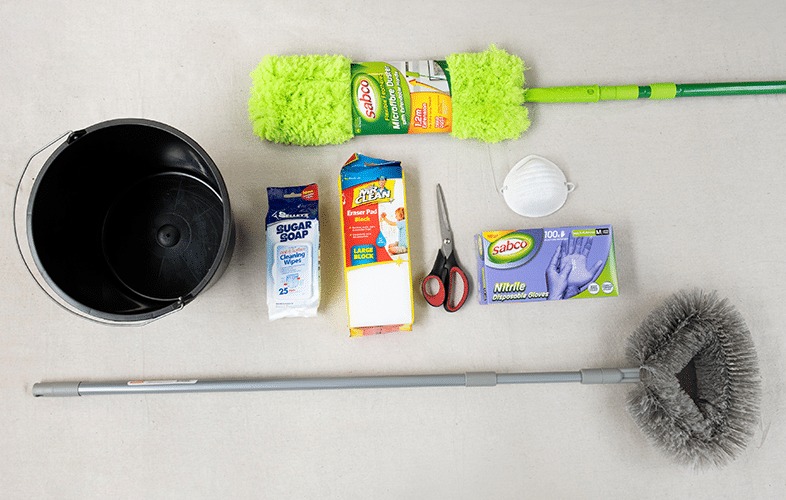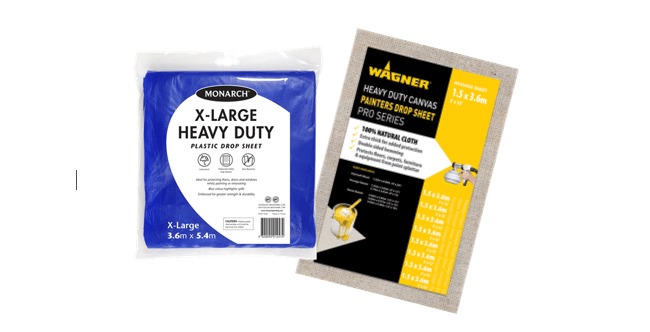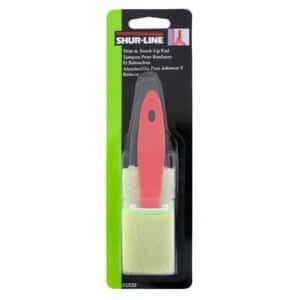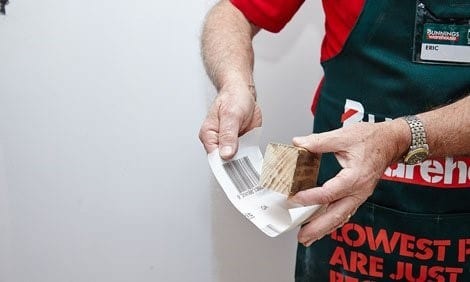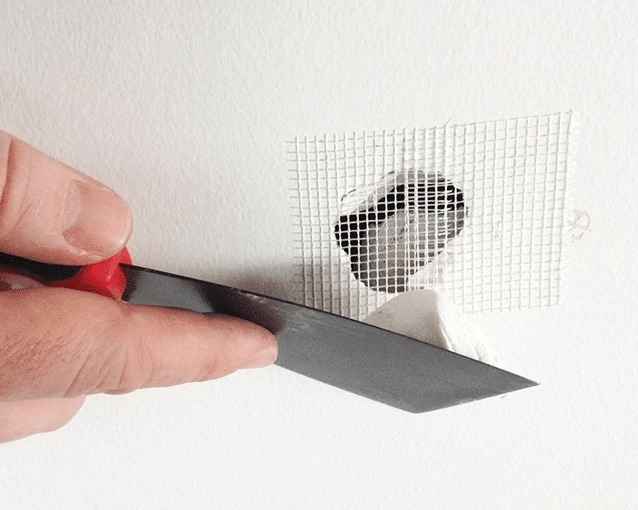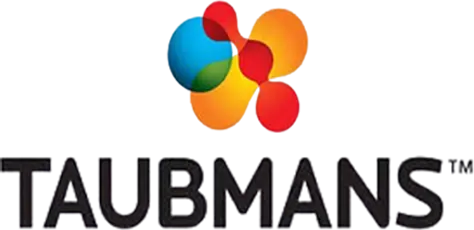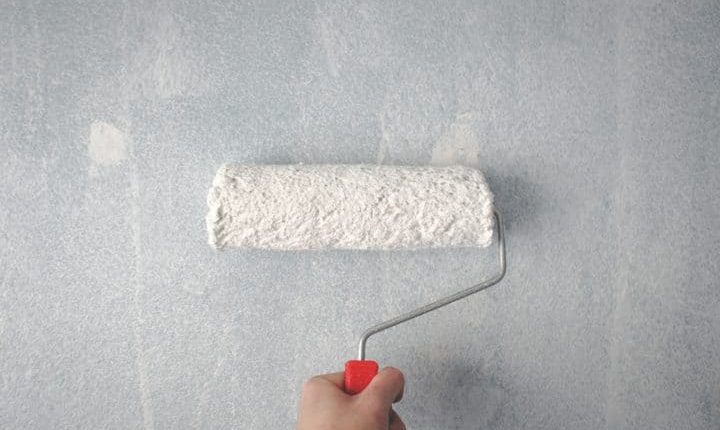
- Phi Dang
- /
Have you been overwhelmed by the wide range of painting equipment and tools available in the market to paint your home?
You don’t have to blow a hole in your budget by buying every tool in town. You only need to buy the essential tools to paint your home. However, you must invest in top-grade and the highest quality brands to obtain the best results when you paint your home.
Here’s a list of all the equipment and tools you must have to paint your home:
PAINTERS TAPE
A good quality masking tape can be used to cover surfaces that you do not want to paint. For example, light switches, power points and window trims. We recommend ScotchBlue TM Painters Tape.
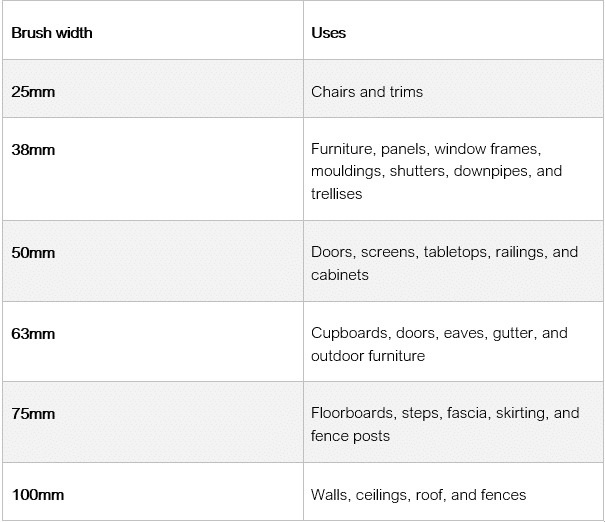 Cutter brushes have long handles for easy manoeuvres. They have fewer bristles (or filaments) therefore do not hold that much paint. They are used for ‘cutting in’ areas like windows and door frames, ceilings, and wall corners
Cutter brushes have long handles for easy manoeuvres. They have fewer bristles (or filaments) therefore do not hold that much paint. They are used for ‘cutting in’ areas like windows and door frames, ceilings, and wall corners
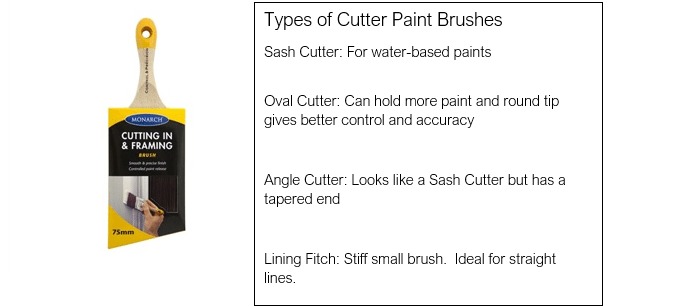
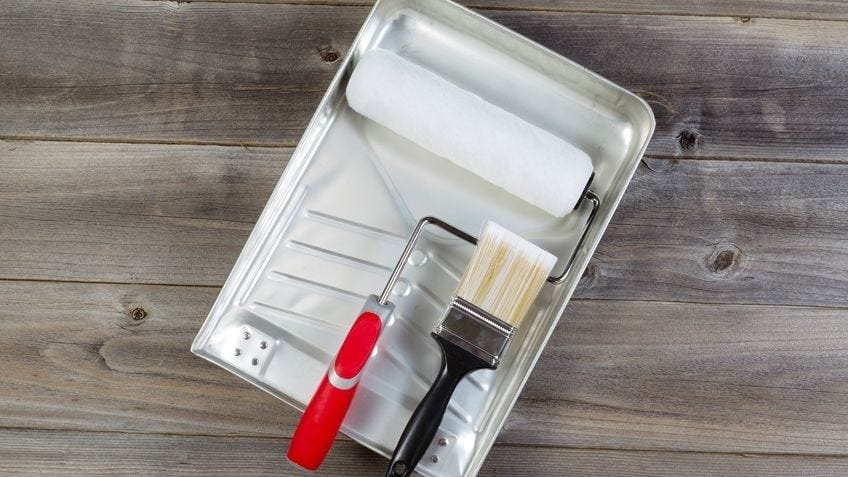 A roller frame allows the roller cover to roll paint onto a surface. An extension pole helps you reach high areas like ceilings and walls.
Roller covers come in different materials. Here’s a simple guide on roller covers:
A roller frame allows the roller cover to roll paint onto a surface. An extension pole helps you reach high areas like ceilings and walls.
Roller covers come in different materials. Here’s a simple guide on roller covers:
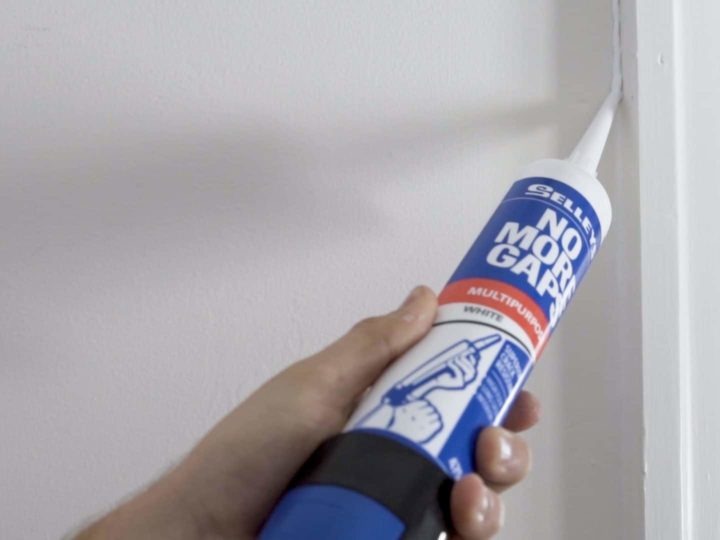 Fillers are used to fill cracks and smoothen uneven surfaces before you paint your home.
Fillers are used to fill cracks and smoothen uneven surfaces before you paint your home.
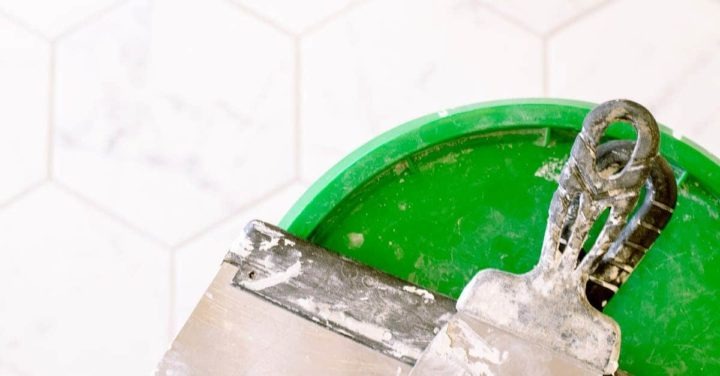 Scraping paint is usually done with a stiff wire brush and paint scraper or a combination of both.
A wire brush is good for hard and tough surfaces like an old window frame. Wire brushes can remove loose paint, but they cannot completely strip the paint. A scraper will be able to do the job for you. A 1-inch to 1 ½-inch putty knife is a good initial investment for your house painting project.
Scraping paint is usually done with a stiff wire brush and paint scraper or a combination of both.
A wire brush is good for hard and tough surfaces like an old window frame. Wire brushes can remove loose paint, but they cannot completely strip the paint. A scraper will be able to do the job for you. A 1-inch to 1 ½-inch putty knife is a good initial investment for your house painting project.
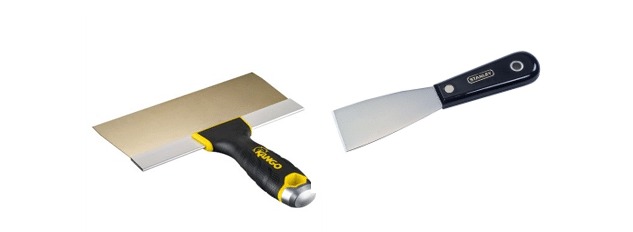 A putty knife looks like a scraper, but it has a thinner and more flexible blade. It is used for applying the compound. Putty knives are suitable for small surface areas. For larger surfaces, a tapping knife is more suitable. Invest in a 2-inch putty knife and a 6-inch wide tapping knife.
A putty knife looks like a scraper, but it has a thinner and more flexible blade. It is used for applying the compound. Putty knives are suitable for small surface areas. For larger surfaces, a tapping knife is more suitable. Invest in a 2-inch putty knife and a 6-inch wide tapping knife.
WALL CLEANERS
You need tools to clean the walls because you can only apply paint to a clean surface. Painting on a dirty wall can result in the paint not adhering properly or an uneven finish (for example, bunching and bubbling). Some of the tools you will need to clean the walls are already in your cupboards so have a good look at what you have before you buy anything. Here’s what you need to clean your walls before you paint your home- Bucket
- Extendable duster
- Selleys Sugar Soap
- Microfibre Duster with extendable handles
- Long-handled cobwebs remover
- Mask
- Rubber gloves
- Scissors
- Eraser blocks
- Sponge
PAINTERS TAPE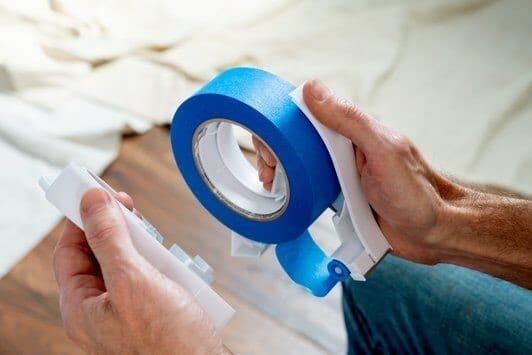
A good quality masking tape can be used to cover surfaces that you do not want to paint. For example, light switches, power points and window trims. We recommend ScotchBlue TM Painters Tape.
PAINT BRUSHES
Paintbrushes are important to achieve a professional paint finish. Do not be tempted to save on paintbrushes by buying poor quality products. The better the brush, the smoother the finish so invest in a good set of brushes. What brushes you buy depends on which part of the house you are painting. Wall brushes are standard, common brushes. They are squarish or oval. Wall brushes are designed to hold more paint because of their thicker bristles (or filaments). They create long, smooth strokes when used properly. Wall brushes are best used for general or broad painting. Cutter brushes have long handles for easy manoeuvres. They have fewer bristles (or filaments) therefore do not hold that much paint. They are used for ‘cutting in’ areas like windows and door frames, ceilings, and wall corners
Cutter brushes have long handles for easy manoeuvres. They have fewer bristles (or filaments) therefore do not hold that much paint. They are used for ‘cutting in’ areas like windows and door frames, ceilings, and wall corners

ROLLERS
An absolute must-have to make your painting project easier. To use a roller, you will need tray, frame, roller cover and an extension pole. A roller frame allows the roller cover to roll paint onto a surface. An extension pole helps you reach high areas like ceilings and walls.
Roller covers come in different materials. Here’s a simple guide on roller covers:
A roller frame allows the roller cover to roll paint onto a surface. An extension pole helps you reach high areas like ceilings and walls.
Roller covers come in different materials. Here’s a simple guide on roller covers:
- Lambskin – are more absorbent and are suitable for concrete and render surfaces.
- Microfibre – are suitable for ceilings and walls
- Polyester – can be used on interior walls, ceilings and rendered surfaces. They are not as absorbent as lambskin or as smooth as applicator as microfibre
- Foam – are suitable for doors and trims to achieve a high gloss finish
- Mohair – are ideal for oil-based paints and water-based gloss and semi-gloss paints
- Textured – are used for specialty finishes to create a fine-textured finish
DROP SHEETS
Drop sheets or drop cloths are used as a protective covering to protect floors and furniture. They make cleaning up fuss-free and super easy. Drop sheets come in canvas or plastic. Canvas is more durable and absorbent. Plastic is lightweight, cost-effective, and waterproof but they also tear easily.FILLERS
 Fillers are used to fill cracks and smoothen uneven surfaces before you paint your home.
Fillers are used to fill cracks and smoothen uneven surfaces before you paint your home.
Types of fillers:
Powder – must be mixed with water before applying. They are suitable for both interior and exterior uses Lightweight fillers – are suitable for small to medium cracks and holes Ready-mixed fillers are convenient and easy-to-apply. They can shrink when dried and will take a long time to dry if you are using it on a large surface area Caulk – come in caulking tubes. They are made of flexible acrylic that dries faster and smoother. They are used for filling gaps in doors, windows, skirting and architraves Find the best Selleys Filler for your painting project here.LADDER
A standard six-foot fibreglass ladder that fits your weight specifications is an essential investment for any home painting project.PAINT TOUCH-UP TOOL
Shur-Line Touch Up Painter are easily available from your local hardware store. This affordable little gadget can help you touch up high traffic areas like walls and doors.PAINT SCRAPERS
 Scraping paint is usually done with a stiff wire brush and paint scraper or a combination of both.
A wire brush is good for hard and tough surfaces like an old window frame. Wire brushes can remove loose paint, but they cannot completely strip the paint. A scraper will be able to do the job for you. A 1-inch to 1 ½-inch putty knife is a good initial investment for your house painting project.
Scraping paint is usually done with a stiff wire brush and paint scraper or a combination of both.
A wire brush is good for hard and tough surfaces like an old window frame. Wire brushes can remove loose paint, but they cannot completely strip the paint. A scraper will be able to do the job for you. A 1-inch to 1 ½-inch putty knife is a good initial investment for your house painting project.
PUTTY KNIFE AND TAPPING KNIFE
 A putty knife looks like a scraper, but it has a thinner and more flexible blade. It is used for applying the compound. Putty knives are suitable for small surface areas. For larger surfaces, a tapping knife is more suitable. Invest in a 2-inch putty knife and a 6-inch wide tapping knife.
A putty knife looks like a scraper, but it has a thinner and more flexible blade. It is used for applying the compound. Putty knives are suitable for small surface areas. For larger surfaces, a tapping knife is more suitable. Invest in a 2-inch putty knife and a 6-inch wide tapping knife.
SANDPAPER
When buying sandpaper, remember that the lower the number the rougher the sandpaper. Start with a 60 to 80 grade and finish with a 120 grade. Sanding with a higher grade (less coarse) sandpaper will progressively remove the scratches left by the previous sandpaper. Change the paper often because its effectiveness lessens with use. Sand in a circular motion. Sanding blocks are great for tricky corners and curves.Sandpaper Grades
Coarse – 40 to 60 Medium 8- to 120 Fine 150 – 180 Very Fine – 220 to 240 Super Fine 360 and aboveFIBRE-MESH TAPE
Gyprock self-adhesive fibre-mesh tapes are excellent for repairing large holes and cracks before applying filler and sanding. To repair a large hole in the wall:- Clean the hole and its surrounding surfaces
- Apply a self-adhesive fibre-mesh tape to cover the hole. Allow for 2-3cm around the edges
- Apply Selleys Spakfilla Rapid with a putty knife or spatula. Make sure it completely covers the mesh. Apply in multiple directions then smooth and remove access putty with single downward strokes.
- Leave to dry completely before sanding and painting
- Why You Should Consider Waterproof Paint for Interior Painting
- 6 Glamorous Reasons To Paint Your House Interior in Spring
- What you need to know before hiring an interior house painter
- Sensational Wall Colours for Timber Floors
